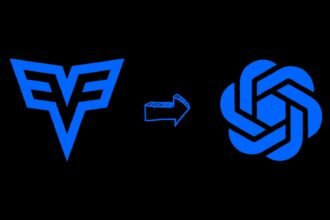Step into the innovative realm of Large Action Models (LAMs), an exciting development from the Rabbit Research Team.
LAMs are unique because they understand and carry out human commands in computer programs, moving beyond the capabilities of traditional models.
They offer a straightforward way to model applications and user interactions, improving accuracy, speed, and clarity. LAMs are set to transform how AI systems interact with us, focusing on being responsible, reliable, and deeply in tune with human needs.
What is Large Action Models (LAMs)
The Large Action Model (LAM) is a cutting-edge and transformative system created by the Rabbit Research Team. It marks a significant shift in how AI systems understand and perform human actions within computer programs.
Different from typical models that rely on temporary representations like text, LAM directly models the structure of applications and the actions within them. This leads to improved precision, interpretability, and quickness.

LAM’s goal goes beyond just completing tasks; it aims to fundamentally change how humans and machines interact, making AI systems more responsible, reliable, and aligned with human needs.
Large Action Models (LAMs) Features
1. Combined Neuro-Symbolic Method
This approach blends the logical depth of symbolic reasoning with neural networks’ ability to recognize patterns. It’s tailored to break down and understand complex structures in applications, offering a deeper insight and modeling ability.
2. Accurate Action Mapping
LAMs are naturally skilled in precisely mapping and interpreting the structure of different applications and the actions performed within them. This direct approach ensures a realistic representation of how humans interact with digital platforms.
3. Observation-Based Learning
Large Action Models excel in learning by observing human actions, accurately mirroring these interactions. This approach ensures that actions are consistently and reliably replicated.
4. Advanced Web Navigation Skills
LAMs stand out in web navigation by overcoming the limitations of purely neural-based models. They offer improved precision and quicker response times, significantly enhancing efficiency in digital navigation.
5. Ethical and Reliable Ecosystem Integration
LAMs are integrated components of a larger, ethically-focused ecosystem, ensuring their deployment is characterized by accountability, dependability, and commitment to ethical operational standards.
6. Seamless AI Integration in Consumer Devices
LAMs aim for a future where AI is seamlessly integrated into everyday devices. They support moving intensive computational tasks to centralized servers, leading to high-performance, cost-efficient solutions without needing powerful processors in consumer devices.
LAMs in Organizations Use
Companies see LAM as a game-changing technology poised to significantly refine operational processes.
With their capability to understand and carry out intricate tasks across various applications, LAMs are set to automate and streamline workflows, saving time and resources while enhancing productivity.
LAMs’ capacity to learn and adapt means they can continually refine their performance and offer tailored solutions. Additionally, the neuro-symbolic approach allows for scalability and clarity, making LAMs suitable for a wide range of organizational settings.
LAMs in Rabbit OS
Rabbit OS, driven by the Large Action Model, aspires to be a tailor-made operating system with a natural language interface and specialized, cost-effective consumer hardware.
Rabbit OS is set to redefine user experiences by understanding complex user intentions, managing user interfaces, and performing actions on the user’s behalf.
The technology behind Rabbit OS, LAM, equips it to handle tasks on any user interface, like screens or cameras. It understands human intentions and behavior, then acts out these commands across different apps without needing complex integrations like APIs.
The Rabbit R1 device, acting like a walkie-talkie for AI and powered by Rabbit OS, demonstrates the potential of LAM in creating more natural, engaging, and private AI interactions. It offers a fresh way of interacting where technology doesn’t just support but enriches human life, flipping the usual passive engagement with computers.
FAQs: Large Action Models
What sets Large Action Models apart from traditional models?
LAMs directly model application structures, enhancing precision, interpretability, and speed compared to text-based models.
What are the key features of Large Action Models (LAMs)?
LAMs feature neuro-symbolic methods, accurate action mapping, observation-based learning, advanced web navigation, and ethical ecosystem integration.
How can organizations benefit from using LAMs?
LAMs can automate tasks, streamline workflows, and offer tailored solutions, enhancing productivity and scalability in organizational settings.
What is Rabbit OS, and how does it utilize Large Action Models (LAMs)?
Rabbit OS is an operating system powered by LAMs, aiming to understand user intentions and perform actions across different apps, creating more natural AI interactions.
Conclusion
Large Action Models (LAMs) are reshaping our relationship with technology. By directly modeling human actions and applications, LAMs are set to make processes more precise and efficient across various fields.
With their neuro-symbolic method, LAMs learn, adapt, and provide tailored solutions, leading the way for innovations like Rabbit OS.
This breakthrough signifies a movement towards more intuitive, user-focused, and natural technology. In this new era, AI doesn’t just assist; it elevates the human experience.









